Today I made an expedition south of Kyoto to the small town of Yawata.
Another reading for Yawata is Hachiman, and the town boasts Iwashimizu, one of the three major Hachiman Shrines. You could say that in a way Hachiman is the most important kami in Japan, because more shrines are dedicated to the deity than to any other. He is said to be based on Emperor Ojin and to be a deity of war and protector of Japan.
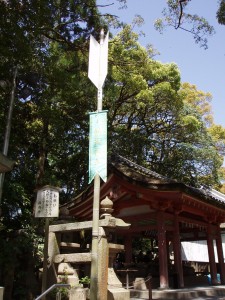
Iwashimizu Hachiman is on a small wooded hill, with bamboo forest and atmospheric surrounds. The shrine is under repair, though by good fortune there happened to be an event involving a tea ceremony, utilizing the fresh water for which the shrine is famous. At the entrance were two huge arrows, symbol of the warrior deity Hachiman, but the most bizarre feature were the ema (votive tablets), many of which bore a picture of a distinguished white man in a suit. Say what? This turned out to be none other than Thomas Edison, and the reason that he was being celebrated was because he used the local bamboo for the filament in his electric light bulb. He first noticed its suitability in a fan he came across in 1879 made from Yawata bamboo. Out of curiosity I asked a priest about the religious significance of this, though he just smiled and said it was good for business. Fair enough, for Shinto seems quite often to be a celebration of history. I wonder though if any other white man has made it into the Shinto folklore?
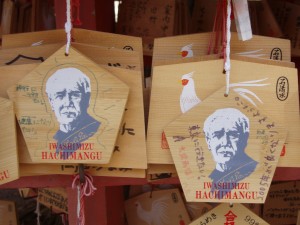
According to guidebooks, Iwashimizu is unusual in keeping a live horse rather than the statues often found elsewhere. I was looking forward to seeing the sacred horse, but unfortunately there was a notice saying that it had died a few months ago at the age of 25. Horses incidentally are the origin of ema (which means ‘horse picture’). Originally real horses were offered to the kami (who descended to earth on horses – presumably a reference to ancient horse-riders), and the custom evolved into wooden representations, then into simple pictures on a tablet of wood. With the fullness of time it seems pictures of horses have now turned into pictures of Edison!
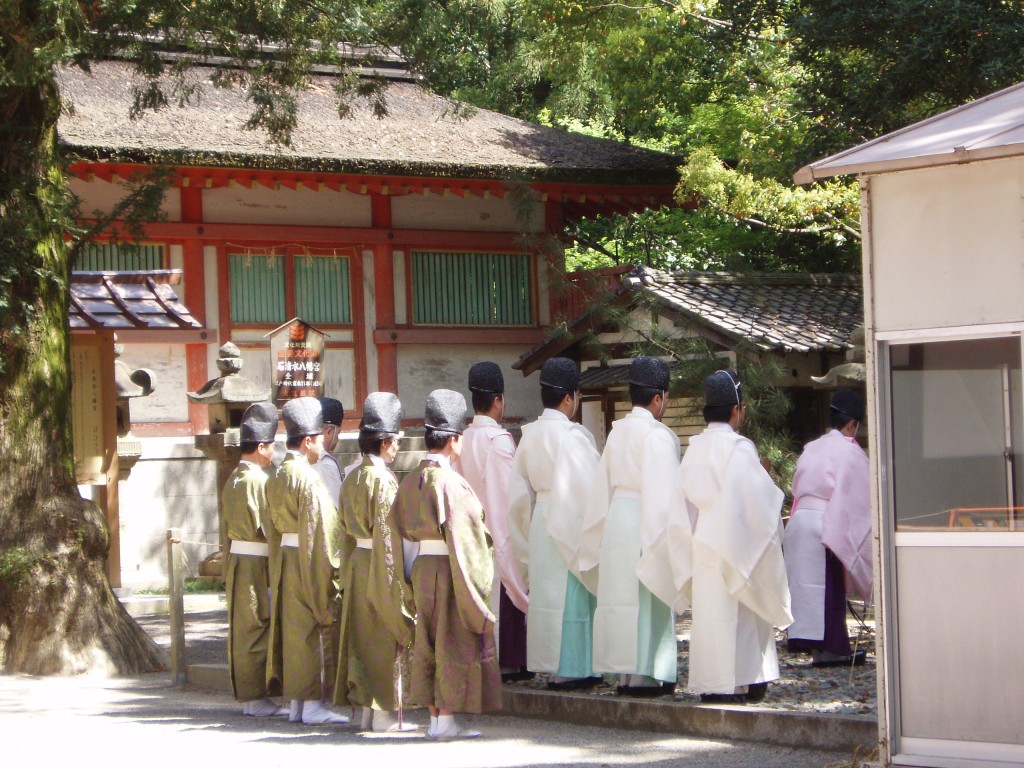
After Iwashimizu, I visited another shrine in Yawata called Hiko Shrine. It was quite unlike any shrine I have visited so far, for it was set up in Meiji times to protect air travel and to pray for victims. The torii looked as if it were made of aluminium, there were aircraft parts dotted around the compound, and the Honden was built in the style of ancient Greece. All very peculiar! A small museum told of the founder, Chuhachi Ninomiya (1866-1936), who built model planes based on bird flight and had ambitions to make a proper plane but was thwarted by his superiors in the army. If not for that, the museum claimed, he would have beaten the Wright brothers to the job.
Shinto comes in many guises and is endlessly fascinating……
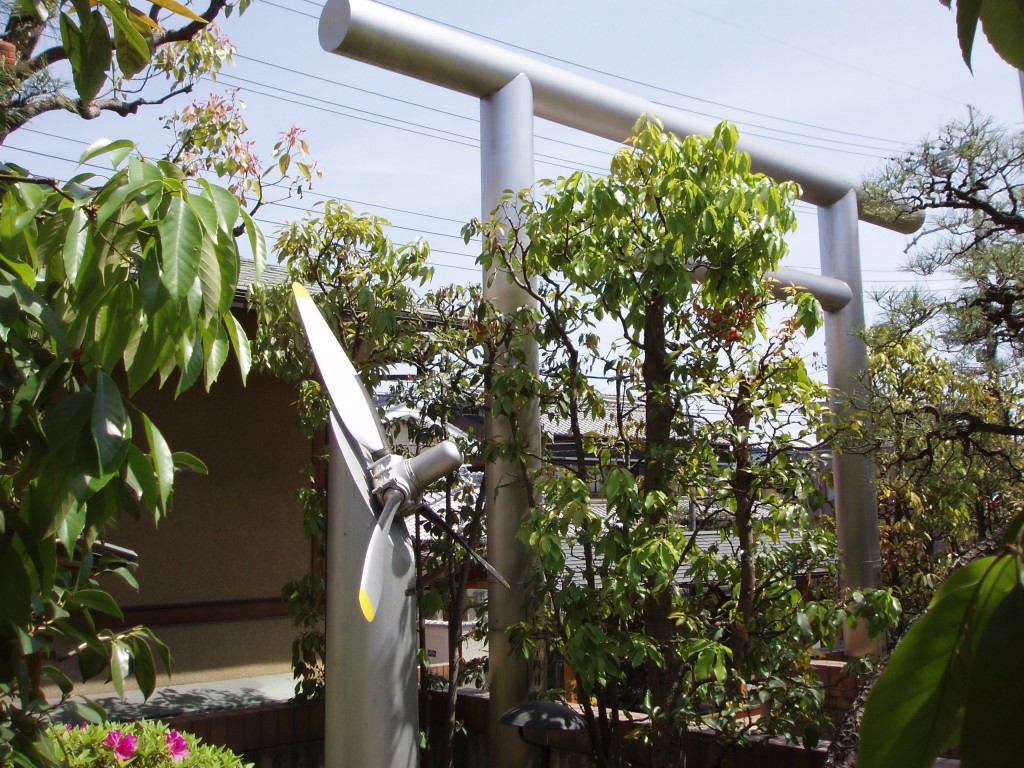

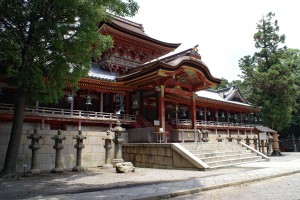
Looking at your site, very interesting by the way, i think you or your readers might just have an answer for me.
I am looking for a shrine (or temple) that is dedicated to the health of horses.
So not so much where horses are “used” for wellbeing of the gods, but where gods will help keep horses safe from injury etc.
Compare:there are shrines for helping with exames, childbirth etc. I am looking for something helping with keeping horses ok.
Thanks for your help.
Carolien